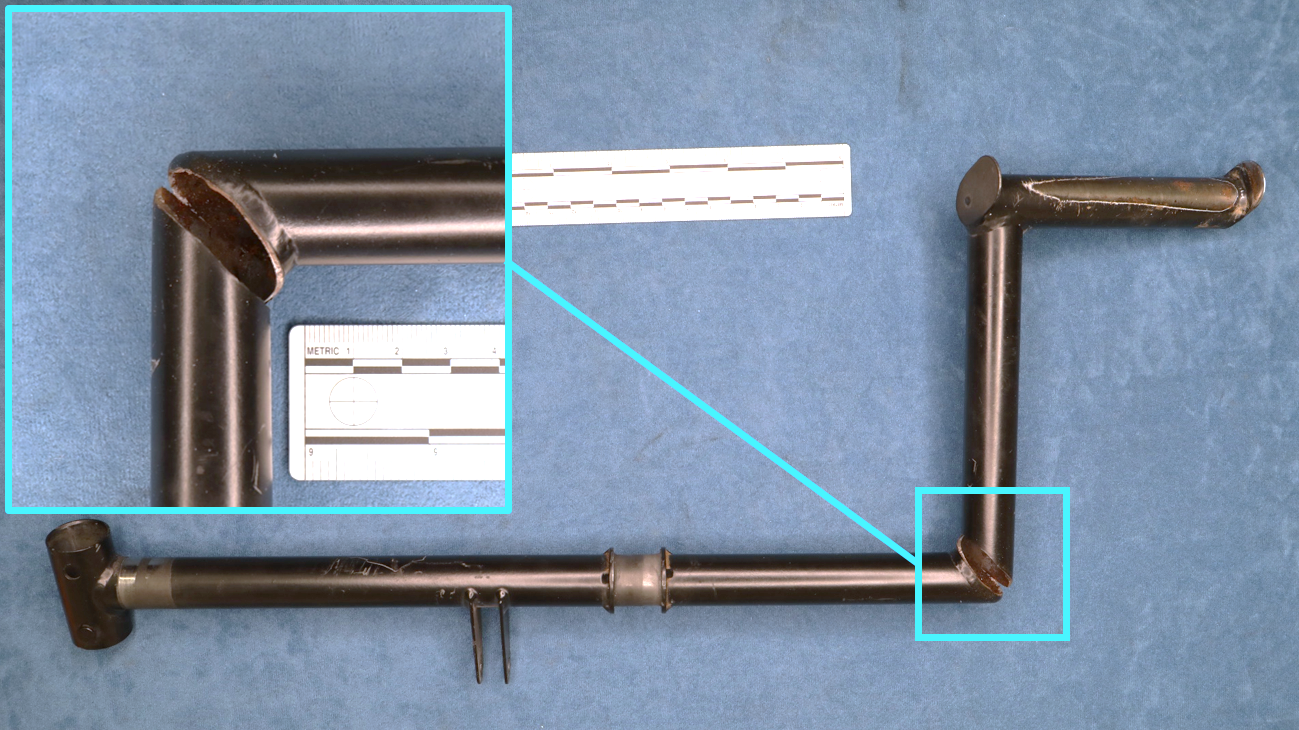
|
Key points:
|
A Robinson R22 helicopter’s right tail rotor pedal failed due to fatigue cracking during mustering operations, an ATSB investigation details.
The R22 was conducting mustering at Kutchera Station in far north Queensland on 22 June 2019, when the pilot applied a small amount of right pedal to turn the helicopter, and the pedal cracked, bent forward and became stuck. The pilot was unable to dislodge the pedal and prepared for an immediate landing in accordance with the stuck pedal procedure. However, just prior to landing, the helicopter struck a tree and became uncontrollable, impacting the ground. While the helicopter was substantially damaged, the pilot was uninjured.
Following the accident, the helicopter’s maintenance organisation identified a significant fracture in the right tail rotor pedal assembly at a right angle weld join between two sections of tube.
The right pedal was then sent to the ATSB’s technical facilities in Canberra. Examination and testing determined that the pedal fracture was a result of a pre-existing fatigue failure, which had initiated at the highest stress part of the welded joint and had opened up following the control input applied by the pilot.
While it was considered likely that the developing crack was present at the time of a recent 100-hourly maintenance inspection, it was not detected, likely due to the location of the weld making it difficult to identify in-situ. The developing crack would have initially presented as a hairline feature, and it was located on a matte black surface, at a change in section slightly below the level of the cabin floor.
“The location of the fatigue crack in this accident highlighted the need to be vigilant when performing inspections in difficult or hard to reach places,” said acting Director Transport Safety Kerri Hughes.
“In the case of the tail rotor pedal, the inspection was made difficult due to the location, and required a torch and mirror to inspect the pedal assembly, which featured a matte black surface.”
While not required as part of the routine inspections, the helicopter’s maintenance organisation has added the tail rotor pedals to the list of components that undergo magnetic particle inspection at each 2,200‑hour overall for the R22.
The investigation also notes the pilot’s positive actions likely contributed to their avoiding any injuries.
“The quick thinking actions of the pilot following the failure resulted in a good outcome, with no injuries sustained,” Ms Hughes said.
Read the report: Tail rotor pedal failure and collision with terrain involving Robinson R22 helicopter, VH-HHQ, near Kutchera Station, Queensland, on 22 June 2019


